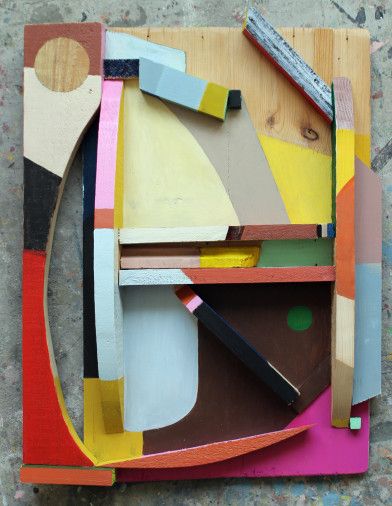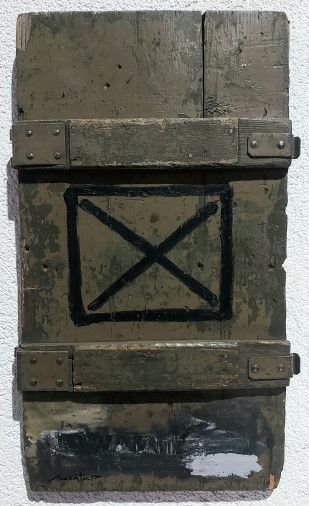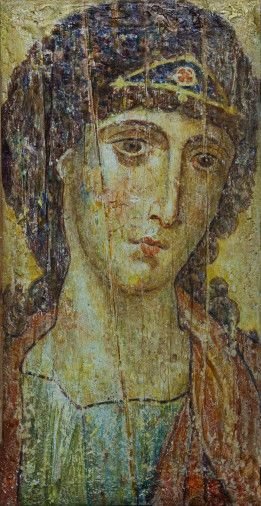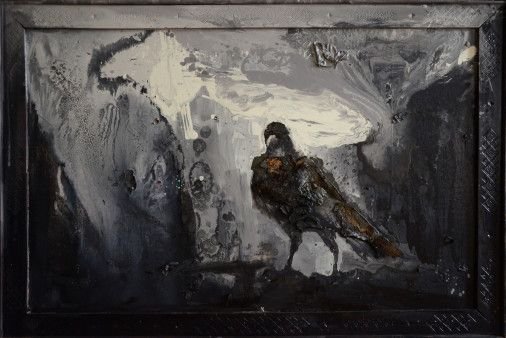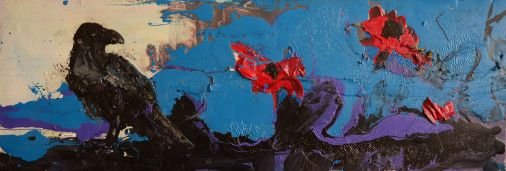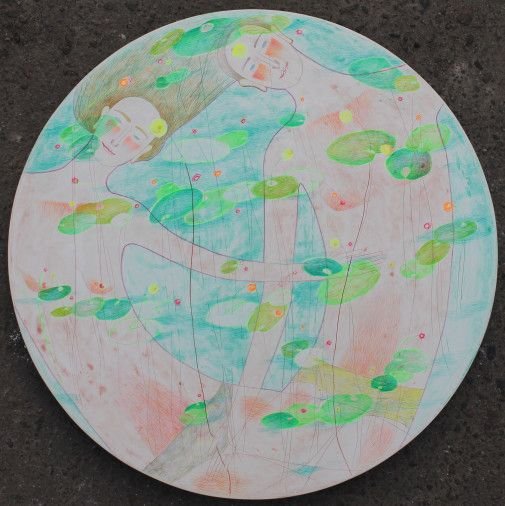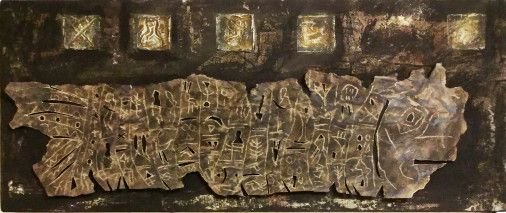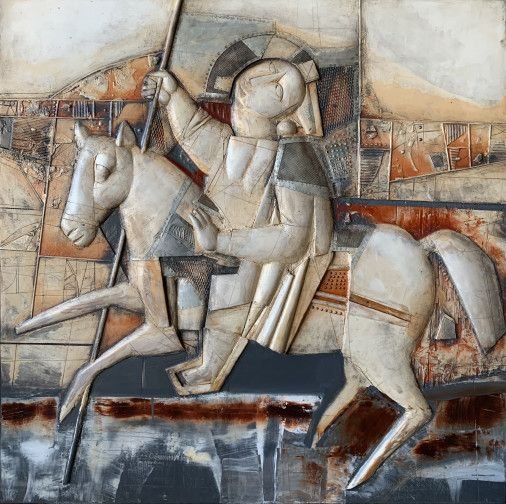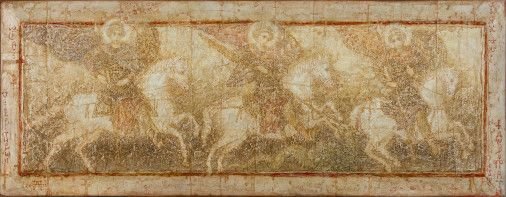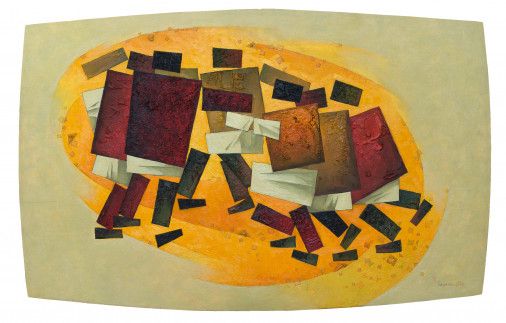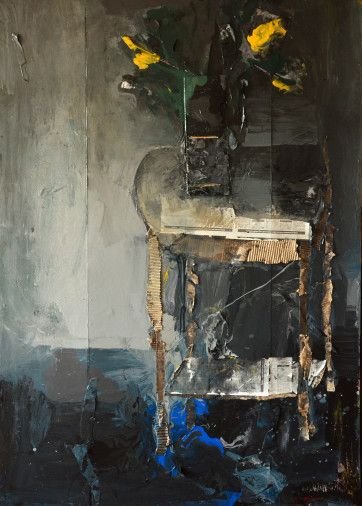Paintings on wooden board
(43)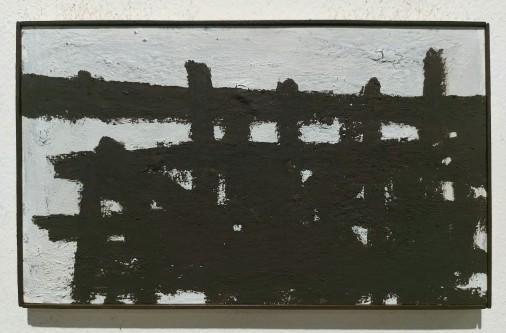
Vasyl Lokatyr € 122

Ihor Melnyk € 422
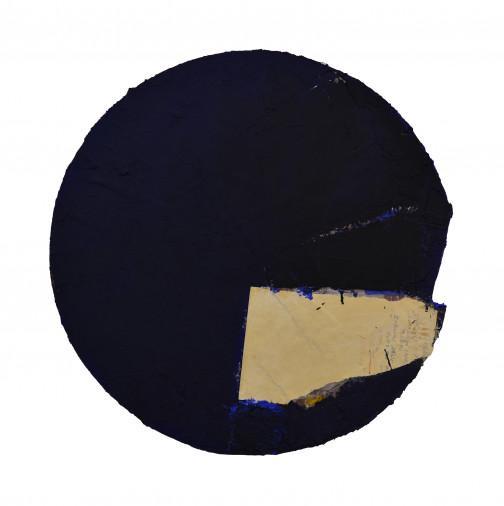
Maksym Mazur € 440459
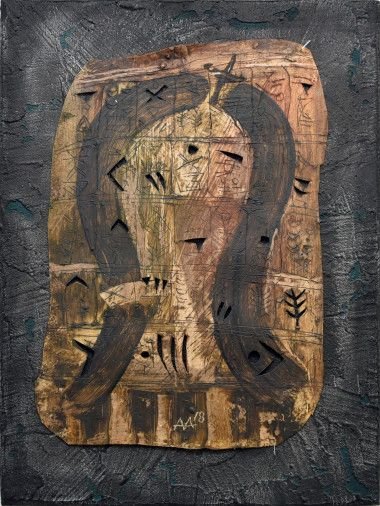
Oleksii Malykh € 749
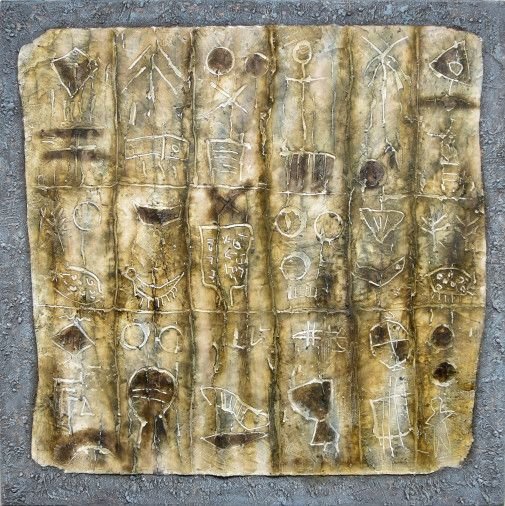
Oleksii Malykh € 2 810
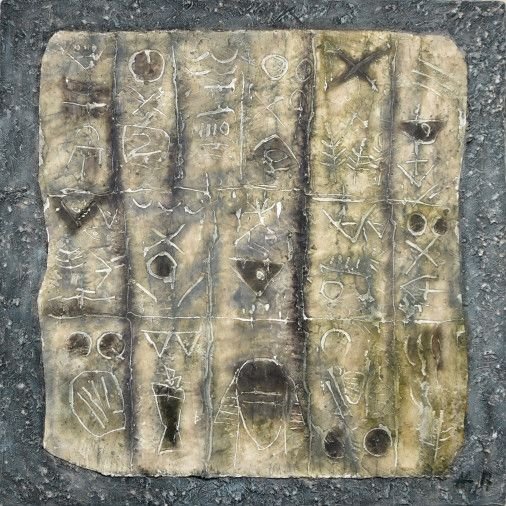
Oleksii Malykh € 2 810
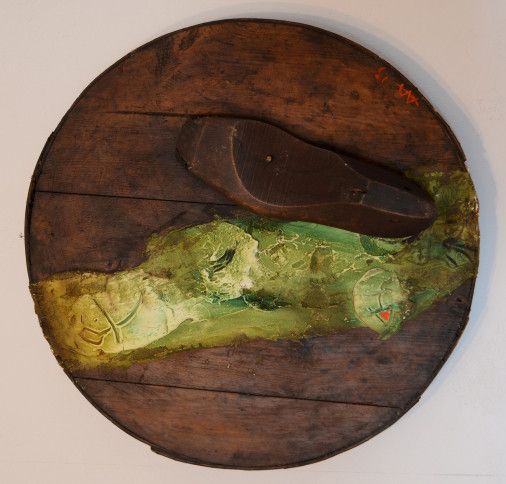
Oleksii Malykh € 2 342
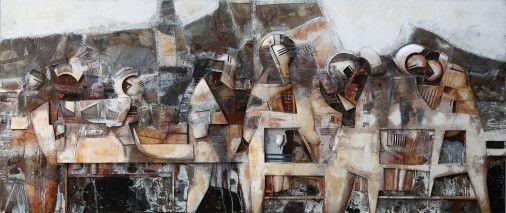
Mykola Zhuravel € 37 470
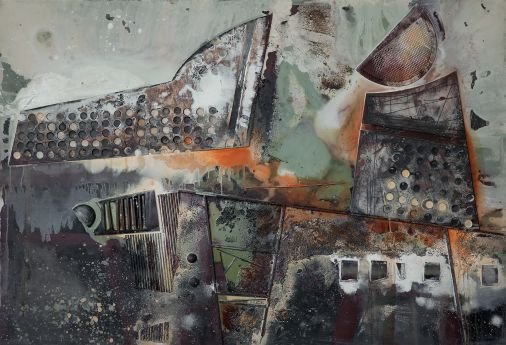
Mykola Zhuravel € 14 051
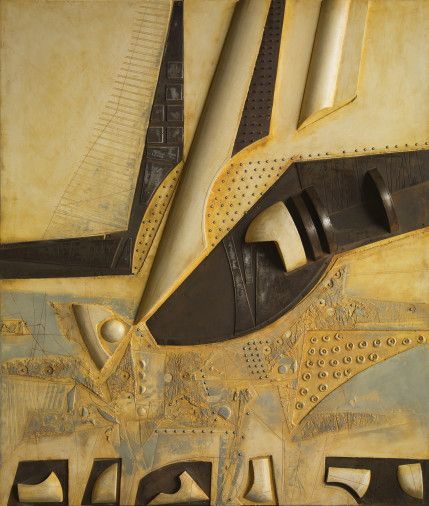
Mykola Zhuravel € 18 735
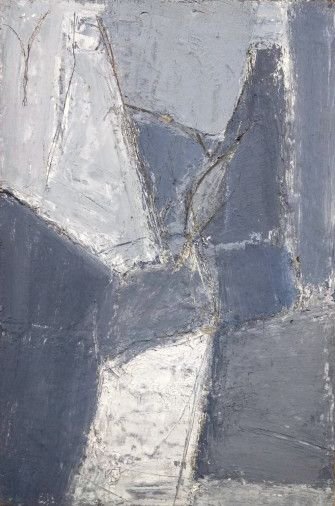
Maksym Mazur € 656
The timeless art of wood panel painting
The art of painting on wood, a tradition that spans millennia, stands as a testament to the enduring allure of this natural medium. From the ancient Egyptian "mummy portraits" to the masterpieces of the Renaissance, wood panel paintings have not only chronicled history but have also showcased the evolving techniques and artistic expressions of different eras. In this exploration of wood panel painting, we delve into the rich tapestry of its history, examining famous works that have left an indelible mark on the world of art. This medium, favored for its durability and unique textural qualities, has been a canvas for innovation, spiritual expression, and profound creativity. Throughout its history, wood painting has adapted to the changing tastes and technologies of the times while maintaining its unique appeal.
Popular wood painting techniques
Wood painting, as an art form, has developed a variety of techniques over the centuries, each catering to the unique properties of the medium and the artistic vision of the painter. Here are some of the most popular techniques used in wood painting:
- Sizing and Priming the Wood. Before any paint is applied, the wood panel must be properly prepared. Sizing involves sealing the wood to protect it from the damaging effects of oils and acids in the paint. Historically, rabbit skin glue was used for sizing, but modern alternatives are also available. Priming is often done with gesso, a mixture of chalk and binder, which provides a smooth, white surface for painting. This step is crucial for both the longevity of the artwork and the vibrancy of the colors.
- Layering and Glazing. Wood's smooth surface is ideal for techniques that involve building up layers of paint. Artists often use thin, transparent layers of paint (glazes) over a base color to create depth and luminosity. This technique, prominent in the works of old masters, allows for subtle color shifts and rich, complex hues.
- Sgraffito. In this technique, artists scratch through a top layer of paint to reveal layers beneath, creating texture and intricate designs. This method is particularly effective on wood due to its firm surface, allowing for precise control over the scratching tool.
- Impasto. This technique involves applying paint thickly, so it stands out from the surface. On wood panels, the paint can be layered to create dramatic texture. The hardness of the wood supports the weight of the paint, allowing the artist to build up substantial layers without sagging or warping.
- Natural Wood Grain Integration. Some artists choose to incorporate the wood's natural grain into their artwork. By selectively applying thin washes of paint or even leaving parts of the wood bare, they can integrate the organic patterns of the wood into the composition, adding a unique natural element to the artwork.
- Gold Leaf and Gilding. A popular technique in religious and iconographic wood paintings, gold leaf application involves adhering thin sheets of gold to the panel. This method is often used to create halos, backgrounds, or other ornamental features, adding luminosity and symbolic richness to the artwork.
- Encaustic Painting. This ancient technique involves using heated beeswax mixed with colored pigments. The wax is applied to the wood in layers and then fused with heat. Encaustic paintings have a unique texture and depth, and the wax provides a protective coating for the wood.
- Egg Tempera. Before the widespread use of oil paint, egg tempera was the primary medium for panel painting. It involves mixing pigments with egg yolk and applying in thin, semi-transparent layers. Egg tempera dries quickly and produces a luminous, matte finish.
These techniques showcase the versatility of wood as a painting surface and the creative possibilities it offers. From historical practices to modern adaptations, wood painting techniques continue to evolve, allowing artists to explore new artistic expressions while respecting the medium's rich heritage.
History of wood paintings
The history of wood paintings is rich and varied, stretching back thousands of years and spanning various cultures and artistic movements. Here's a concise overview:
- Ancient Origins. The earliest known wood paintings date back to the Greco-Roman period, but it was during the Egyptian era, around 100 BCE, that wood painting began to gain prominence. The so-called “mummy portraits” of this period, painted on wood panels, are among the oldest surviving examples. These portraits showcased incredible detail and realism, a testament to the advanced techniques of the time.
- Medieval and Byzantine Era. During the medieval period, especially in Byzantine art, wood panels were the primary medium for religious iconography. These works were characterized by their spiritual themes and often featured gold leaf and tempera paint. The wood panels provided a durable surface for these precious works, many of which have survived to the present day.
- Renaissance Innovations. The Renaissance era saw a significant evolution in wood painting techniques. Artists in Northern Europe, where wood was more readily available than canvas, particularly favored wood panels. The smooth surface of wood allowed for fine detail and precision, making it ideal for the intricate work of artists like Albrecht Dürer and Hans Holbein. During this period, the preparation of the wood panel became an art in itself, with complex processes developed to ensure the longevity and stability of the paintings.
- The Decline and Later Revival. With the advent of canvas in the 16th century, wood painting began to decline. Canvas was cheaper, easier to transport, and allowed for larger works. However, some artists, like Rembrandt and Peter Paul Rubens, continued to use wood panels for certain works, valuing the stability and texture it provided. In the modern era, there has been a revival of interest in wood as a painting medium, particularly among artists seeking a connection with traditional techniques or those who appreciate the unique qualities of wood.
- The Baroque Period and Beyond. In the Baroque era, wood panels continued to be used, though less frequently due to the rising popularity of canvas. Artists like Caravaggio and Vermeer, known for their dramatic use of light and shadow, occasionally chose wood for its smooth surface, which allowed for fine detail and the manipulation of light effects. This period also saw the use of wood panels in smaller, more intimate works of art, such as portraits and genre scenes.
- The 18th and 19th Centuries. During the 18th and 19th centuries, wood panel painting saw a decline as canvas became the dominant medium. However, there were still notable exceptions. For instance, in the early 19th century, artists of the Romantic movement, who valued the connection to historical art forms, occasionally chose wood panels for their work. The use of wood panels in folk art also persisted during this time, especially in rural areas and among traditional craftspeople.
- The 20th Century and Modern Revival. In the 20th century, there was a renewed interest in traditional painting techniques, including wood panel painting, as part of the broader revival of classical art methods. This was seen particularly in the context of the Arts and Crafts movement and later in the resurgence of interest in classical realism. Artists experimenting with various styles, such as Cubism, Expressionism, and Surrealism, also occasionally turned to wood panels, attracted by the texture and solidity of the medium. The latter part of the 20th century saw an increased interest in conservation and the restoration of ancient and Renaissance wood paintings, leading to a deeper understanding of the techniques and materials used.
- 21st Century Trends. In the contemporary art scene, wood panel painting enjoys a niche but dedicated following. Artists value the medium for its historical connotations, durability, and unique surface qualities. There is also an interest in sustainable art practices, with artists seeking out eco-friendly materials, including reclaimed wood, for their paintings. Wood panel painting is being reinterpreted in the context of modern art forms and digital technologies, leading to innovative expressions that blend traditional and contemporary techniques.
Contemporary adaptations of wood painting
In recent years, contemporary artists have been revisiting wood painting, often integrating modern techniques and themes while retaining the traditional essence of the medium. This revival is part of a broader movement in the art world that values sustainable materials and a return to handcrafted authenticity. Contemporary wood paintings often showcase a fusion of old and new, with artists employing digital design, mixed media, and unconventional painting techniques alongside traditional methods. This has led to a diverse range of styles and subjects, from abstract compositions that highlight the natural wood grain to detailed figurative works that blend historical and modern elements. This resurgence also speaks to a growing interest in eco-friendly art practices, as artists seek out natural and reclaimed wood sources to reduce their environmental impact.
Famous wood paintings
Throughout art history, several wood paintings have gained renown, not only for their artistic merit but also for their historical significance and the stories they encapsulate. Here are some of the most famous wood paintings:
- The Ghent Altarpiece (1432) by Hubert and Jan Van Eyck: This monumental piece, also known as "The Adoration of the Mystic Lamb", is one of the most influential paintings in European art history. Composed of twelve panels, it is renowned for its intricate detail and the use of oil paints, which allowed for unprecedented realism and depth of color.
- The Isenheim Altarpiece (1512–1516) by Matthias Grünewald and Nikolaus Hagenauer: This altarpiece is particularly noted for its vivid coloration and complex, emotive representations of religious scenes. Its panels depict various biblical scenes and have been praised for their emotional intensity and dramatic use of light and shadow.
- Mona Lisa (1503-1506) by Leonardo da Vinci: Perhaps the most famous painting in the world, the "Mona Lisa" was painted on a poplar wood panel. Its fame lies in Leonardo's revolutionary use of technique, including sfumato (the blending of tones and colors) and the enigmatic expression of the subject.
- The Arnolfini Portrait (1434) by Jan Van Eyck: This painting is another celebrated Northern Renaissance work on oak panel. It's known for its detailed depiction of a merchant and his wife and is often analyzed for its use of symbolism and the reflection in the mirror at the back of the room.
- Portrait of a Young Man (c. 1483-1485) by Sandro Botticelli: This painting is an exemplary piece of Renaissance portraiture, showcasing Botticelli's skill in capturing the subtleties of human expression. It's known for its realistic depiction and the serene quality of the subject's face.
- Albrecht Dürer’s Self-Portraits: Dürer created several self-portraits on wood panels, including the famous "Self-Portrait at Twenty-Eight" (1500), which is often noted for its striking, Christ-like depiction of the artist.
- Hieronymus Bosch’s Triptych: Bosch’s famous triptych, such as "The Garden of Earthly Delights" (c. 1490–1500), painted on oak panels, are celebrated for their detailed, fantastical imagery and complex iconography.
These famous wood paintings are not just important artworks; they are also historical artifacts that offer insights into the periods in which they were created. They highlight the versatility and enduring appeal of wood as a medium for painting.
The future of wood painting
Looking ahead, the future of wood painting appears vibrant and promising. As technology continues to advance, new possibilities for combining digital art with traditional wood painting techniques are emerging. Artists are experimenting with laser etching, 3D printing, and augmented reality to add depth and interactivity to their wood paintings. Additionally, there is an increasing global interest in cultural preservation, leading to collaborations between traditional wood painters and contemporary artists. These collaborations are not only reviving ancient techniques but are also helping to preserve cultural heritage through art. Educational institutions are beginning to include wood painting in their curricula, recognizing its historical significance and contemporary relevance. As we move forward, wood painting is likely to continue evolving, blending tradition with innovation, and attracting a new generation of artists passionate about this enduring medium.
Wood painting in Ukraine
Wood painting in Ukraine has a rich and distinctive tradition that is deeply rooted in the country's cultural history. This tradition, encompassing both religious and secular art, reflects a unique blend of local customs, spiritual beliefs, and artistic styles.
- Religious Iconography. One of the most prominent forms of wood painting in Ukraine is religious iconography. This tradition dates back centuries, with Eastern Orthodox Christianity playing a significant role in shaping the artistic style. Ukrainian icons are not just religious artworks; they are considered sacred objects meant for worship and veneration. These icons, typically painted on wood panels, often depict saints, scenes from the Bible, and the Virgin Mary. The style is characterized by its vivid colors, symbolic imagery, and a sense of spiritual depth.
- Petrykivka painting. A notable and unique aspect of Ukrainian wood painting is the Petrykivka style, which originated in the village of Petrykivka in Dnipropetrovsk Oblast. This decorative folk art is recognized for its intricate floral and nature-inspired designs. Traditionally, these paintings were used to decorate household items, walls, and furniture. In 2013, Petrykivka painting was included in the UNESCO Representative List of the Intangible Cultural Heritage of Humanity, highlighting its cultural significance and the skill involved in this art form.
- Hutsul woodcraft. In the Carpathian region, particularly in the Hutsul culture, woodcraft is highly developed. This includes painted wood carvings and inlays used in creating household items, religious objects, and decorative panels. The Hutsul style is known for its geometric patterns, vibrant colors, and the use of local myths and nature in its motifs.
- Contemporary wood painting. Contemporary Ukrainian artists continue to explore and evolve the tradition of wood painting. While some adhere to the classic styles of iconography or folk art, others integrate modern artistic trends and techniques, creating a fusion of the old and the new.
Wood painting in Ukraine is more than just an artistic endeavor; it's a reflection of the country's history, spirituality, and cultural identity. These artworks are a testament to the resilience and creativity of the Ukrainian people, preserving traditional techniques and stories while adapting to the changing times. In summary, wood painting in Ukraine encompasses a rich diversity of styles and techniques, each carrying its own historical and cultural significance. From sacred icons to vibrant folk art, these works continue to be an integral part of Ukraine's artistic heritage.







